
Egon Schiele Painting Reproductions 3 of 3
1890-1918
Austrian Secession/Expressionist Painter
67 Schiele Paintings
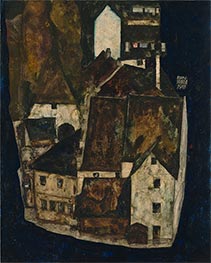
Dead City III (City on the Blue River III) 1911
Oil Painting
$700
$700
Canvas Print
$61.81
$61.81
SKU: SCE-17260
Egon Schiele
Original Size: 37.3 x 29.8 cm
Leopold Museum, Vienna, Austria
Egon Schiele
Original Size: 37.3 x 29.8 cm
Leopold Museum, Vienna, Austria
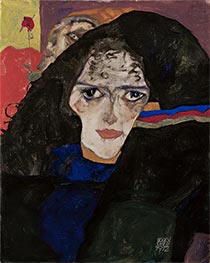
Mourning Woman 1912
Oil Painting
$786
$786
Canvas Print
$61.81
$61.81
SKU: SCE-17261
Egon Schiele
Original Size: 42.5 x 34 cm
Leopold Museum, Vienna, Austria
Egon Schiele
Original Size: 42.5 x 34 cm
Leopold Museum, Vienna, Austria

Husband and Wife (Hug) 1917
Paper Art Print
$58.54
$58.54
SKU: SCE-17262
Egon Schiele
Original Size: 49 x 29 cm
Private Collection
Egon Schiele
Original Size: 49 x 29 cm
Private Collection

Devotion 1913
Paper Art Print
$58.54
$58.54
SKU: SCE-17263
Egon Schiele
Original Size: 48.3 x 32 cm
Leopold Museum, Vienna, Austria
Egon Schiele
Original Size: 48.3 x 32 cm
Leopold Museum, Vienna, Austria
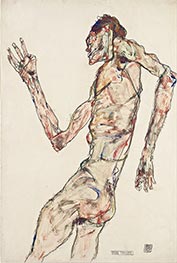
The Dancer 1913
Paper Art Print
$58.54
$58.54
SKU: SCE-17264
Egon Schiele
Original Size: 48.3 x 32.3 cm
Leopold Museum, Vienna, Austria
Egon Schiele
Original Size: 48.3 x 32.3 cm
Leopold Museum, Vienna, Austria
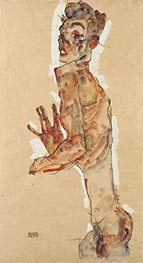
Self-Portrait with Splayed Fingers 1911
Paper Art Print
$58.54
$58.54
SKU: SCE-17265
Egon Schiele
Original Size: 52.5 x 28 cm
Leopold Museum, Vienna, Austria
Egon Schiele
Original Size: 52.5 x 28 cm
Leopold Museum, Vienna, Austria

Portrait of Edith Schiele 1917
Paper Art Print
$58.54
$58.54
SKU: SCE-17266
Egon Schiele
Original Size: 46 x 29.6 cm
Graphische Sammlung Albertina, Vienna, Austria
Egon Schiele
Original Size: 46 x 29.6 cm
Graphische Sammlung Albertina, Vienna, Austria
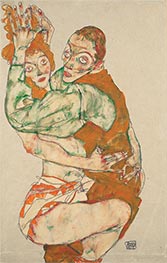
Lovemaking 1915
Paper Art Print
$58.54
$58.54
SKU: SCE-17267
Egon Schiele
Original Size: 49.6 x 31.7 cm
Leopold Museum, Vienna, Austria
Egon Schiele
Original Size: 49.6 x 31.7 cm
Leopold Museum, Vienna, Austria

Schiele's Wife with Her Little Nephew 1915
Paper Art Print
$58.54
$58.54
SKU: SCE-17268
Egon Schiele
Original Size: 48.3 x 38 cm
Boston Museum of Fine Arts, Massachusetts, USA
Egon Schiele
Original Size: 48.3 x 38 cm
Boston Museum of Fine Arts, Massachusetts, USA
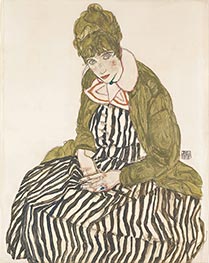
Edith with Striped Dress, Sitting 1915
Paper Art Print
$59.89
$59.89
SKU: SCE-17269
Egon Schiele
Original Size: 50.8 x 40.2 cm
Leopold Museum, Vienna, Austria
Egon Schiele
Original Size: 50.8 x 40.2 cm
Leopold Museum, Vienna, Austria
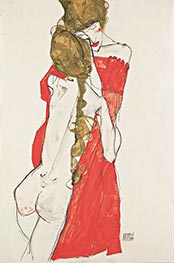
Mother and Daughter 1913
Paper Art Print
$58.54
$58.54
SKU: SCE-17270
Egon Schiele
Original Size: 47.9 x 31 cm
Leopold Museum, Vienna, Austria
Egon Schiele
Original Size: 47.9 x 31 cm
Leopold Museum, Vienna, Austria
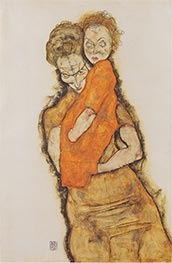
Mother and Child 1914
Paper Art Print
$58.54
$58.54
SKU: SCE-17271
Egon Schiele
Original Size: 48.2 x 32 cm
Leopold Museum, Vienna, Austria
Egon Schiele
Original Size: 48.2 x 32 cm
Leopold Museum, Vienna, Austria
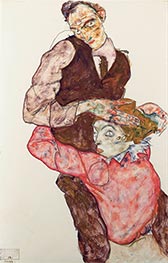
Lovers c.1914/15
Paper Art Print
$58.54
$58.54
SKU: SCE-17272
Egon Schiele
Original Size: 47.4 x 30 cm
Leopold Museum, Vienna, Austria
Egon Schiele
Original Size: 47.4 x 30 cm
Leopold Museum, Vienna, Austria

Naked Girls Embracing 1914
Paper Art Print
$58.54
$58.54
SKU: SCE-17273
Egon Schiele
Original Size: 48 x 31 cm
Leopold Museum, Vienna, Austria
Egon Schiele
Original Size: 48 x 31 cm
Leopold Museum, Vienna, Austria

Nude with Blue Stockings, Bending Forward 1912
Paper Art Print
$58.54
$58.54
SKU: SCE-17274
Egon Schiele
Original Size: 37.5 x 29 cm
Leopold Museum, Vienna, Austria
Egon Schiele
Original Size: 37.5 x 29 cm
Leopold Museum, Vienna, Austria
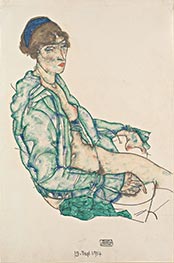
Sitting Semi-Nude with Blue Hairband 1914
Paper Art Print
$58.54
$58.54
SKU: SCE-17275
Egon Schiele
Original Size: 47.4 x 31.3 cm
Leopold Museum, Vienna, Austria
Egon Schiele
Original Size: 47.4 x 31.3 cm
Leopold Museum, Vienna, Austria

Houses on the River (The Old Town) 1914
Oil Painting
$1005
$1005
Canvas Print
$77.67
$77.67
SKU: SCE-17276
Egon Schiele
Original Size: 100 x 120.5 cm
Thyssen-Bornemisza Museum, Madrid, Spain
Egon Schiele
Original Size: 100 x 120.5 cm
Thyssen-Bornemisza Museum, Madrid, Spain

Seated Couple 1915
Paper Art Print
$62.29
$62.29
SKU: SCE-17277
Egon Schiele
Original Size: 51.8 x 41 cm
Graphische Sammlung Albertina, Vienna, Austria
Egon Schiele
Original Size: 51.8 x 41 cm
Graphische Sammlung Albertina, Vienna, Austria

Autumn Trees 1911
Oil Painting
$969
$969
Canvas Print
$92.49
$92.49
SKU: SCE-19790
Egon Schiele
Original Size: 79.5 x 80 cm
Private Collection
Egon Schiele
Original Size: 79.5 x 80 cm
Private Collection